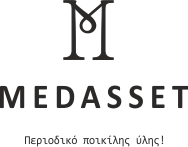The subjects paid one dollar ($1) rated the tasks more positively than did the subjects in the twenty-dollar ($20) or control groups. The subjects in the paid groups experienced dissonance due to inconsistencies between their attitudes and behavior. The subjects’ believed the tasks to be boring, but they told the confederate that the tasks were interesting. However, the one-dollar group rated the tasks positively, while the twenty-dollar group rated the tasks negatively. The twenty-dollar group had external justification for their inconsistency–money motivated them to lie to the confederate about the task being interesting when it was actually boring.
In comparison, some other paradigms, such as the free-choice or the effort justification paradigms, have very few measures of the level of psychological discomfort they induce. This amounts to many data supporting the idea that writing a counterattitudinal essay evokes negative affect, but scarce evidence that the other paradigms induce the same negative affect. As presented above, studies assessing arousal are unclear regarding whether the different cognitive dissonance paradigms elicit the same sort of arousal. Therefore, it is still to be determined if there exists a common CDS across these paradigms.
Adding More Beliefs to Outweigh Dissonant Beliefs
Cognitive dissonance can interfere with the perceptions they hold about themselves and their abilities, which is why it can often feel so uncomfortable and unpleasant. Disposing of trash outside, even when knowing this is against the law, wrong, and is harmful for the environment, is a prominent example of cognitive dissonance, especially if the person feels bad after littering but continues to do so. We’re born inconsistent and tend to rationalize away our cognitive dissonance. Accepting this helps explain the rise of ideologies that promise you can have it all. Hypocrisy involves a contradiction between a person’s supposed principles, beliefs, or character and who they really are or how they behave. Cognitive dissonance is the unpleasant mental state that may result if someone really does have certain beliefs but thinks or acts in a way that contradicts them.
- Consequently, participants in this group ended up reducing the dissonance they felt another way—by reporting that the study had indeed been interesting.
- If we put effort into a task that we have chosen to carry out, and the task turns out badly, we experience dissonance.
- Cognitive dissonance and the way we cope with it regularly affect our relationships, too, both positively and negatively.
- Because these participants did not make a decision, they did not have any dissonance to reduce.
- ] and if the decision was close then the effects of cognitive dissonance should be greater.
In both conditions, we used commitment variables to maximize the magnitude of cognitive dissonance in the Counter-attitudinal condition (i.e., aversive consequence, freedom, publicity; see Harmon-Jones & Mills, 1999; Kiesler, 1971). The publicity and the consequences of the act were high, as participants were instructed to sign the consent form with their name and were told that their arguments would be presented to the committee. Free-choice was emphasized by telling participants that they were free to participate or not in the study and that they could quit the study at any time, without any loss of benefits or other negative consequences. Perhaps due to these psychometric issues, the Dissonance Thermometer is also not used in a standardized way.
Smoking
Early studies on the valence of dissonance arousal mainly used the misattribution paradigm (Zanna & Cooper, 1974). In this paradigm, a plausible explanation is offered to participants to justify their discomfort. For instance, in their seminal paper, Zanna and Cooper’s participants had to ingest a placebo pill that allegedly induced a negative mood. Because of this belief, participants in the dissonance condition were inclined to misattribute their psychological discomfort to the pill instead of the inconsistency, and thus they did not show any use of an inconsistency reduction strategy.
The Role of Cognitive Dissonance in the Pandemic – The Atlantic
The Role of Cognitive Dissonance in the Pandemic.
Posted: Sun, 12 Jul 2020 07:00:00 GMT [source]
The theory of cognitive dissonance has been widely researched in a number of situations to develop the basic idea in more detail, and various factors have been identified which may be important in attitude change. Cognitive dissonance may help you make positive changes in your life, cognitive dissonance theory but it can also be destructive, especially when you look for ways to rationalize and continue harmful behaviors. If you’re experiencing cognitive dissonance, it’s best to ask yourself if the strategies you’re using to cope with it will result in a positive long-term outcome.
